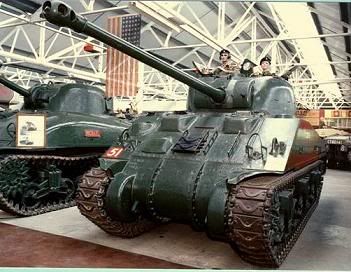Kozzy Mozzy
Active member
zander_0633 said:Well, WAad;s the French tactics on war against the Germans?
Get beaten
zander_0633 said:Well, WAad;s the French tactics on war against the Germans?
Koz said:T-62
M60a2
2dold4this said:There have been several tanks mentioned that are fairly described as crappy but I'm gonna have to go with the King Tiger. Expensive and unreliable, it claimed resources that might have been better spent elsewhere. Not only was it expensive to produce (more than 300,000 marks, the cost of three FW190's), it burned enormous quantities of scarce fuel decreasing the mobility of the rest of the army.
When it did make it to the battle, it wasn't too difficult to defeat.
http://www.battlefield.ru/index.php?option=com_content&task=view&id=167&Itemid=88&lang=en
While it was more powerful than the Sherman or T34, it wasn't as reliable and was much more expensive. Only a few of these tanks could be produced and even fewer could drag themselves to the battle. Inferior in protection and reliability to the Soviet IS2 and the American M26, the King Tiger killed German soldiers by diverting resources, squandering fuel and failing to stop the Allied advance.
Doppleganger said:It could knock out all Allied tanks at almost all ranges and was safe from almost any Allied tank at most ranges.


I've seen the above link before but what needs to be remembered is that the quality of german ore deteriorated in quality towards the end of the war. There is some debate as to how much this affected the quality of German AFVs but it is reasonable to say that it did have an effect. As your link stated the quality of German welding seemed of good quality on the captured King Tiger but the actual metal used wasn't of as high quality as earlier German tanks.2dold4this said:The Russians had no problem knocking out the King Tigers sent to attack their bridge head (See above link.) This was perhaps aided by half of the huge tanks breaking down before they could drag themselves the short distance to the fight and the King Tiger's slow turning turret. The British 17 pounder (same as the US 76 mm), the Russian 85mm, the US 90mm and the Russian 100mm, 122mm and 152mm guns could knock out the King Tiger.
Some penetration test:
http://www.battlefield.ru/index.php?option=com_content&task=view&id=282&Itemid=123&lang=en

Knocked out by artillery in Operation Konrad
Tanks can be used on the defensive but are by their nature, more suited to offense. If a tank can't crawl more than a few miles without breaking down, why not spend the money on a good cheap pillbox? Germany would have been better served purchasing more Panthers, aircraft or even towed antitank guns than buying the expensive King Tiger that was lucky to get to the fight.
The King Tiger may have cost the Germans their Ardennes offensive and Operation Konrad due to their lack of mobility and gas guzzling. This is over and above the fact that resources were used up on a tank that couldn't win battles instead of buying equipment that was useful.
2dold4this said:not the actual design of the tank, which was very good. This is why it's unfair and utterly wrong to call it a crappy design.
I'm not calling it a crappy design. I'm calling it a crappy tank. While it may have had an inspired design (that is debatable as a good designer takes into account the materials he must work with), it's the finished product that counts. The soldier does not care if the flaw is in the production process, the materials, the concept or the design.
Cadet Seaman said:M60A2 wasn't bad, the M551 was worse. The only problem was the Gun/Missle Launcher on the A2.
We use essential cookies to make this site work, and optional cookies to enhance your experience.
